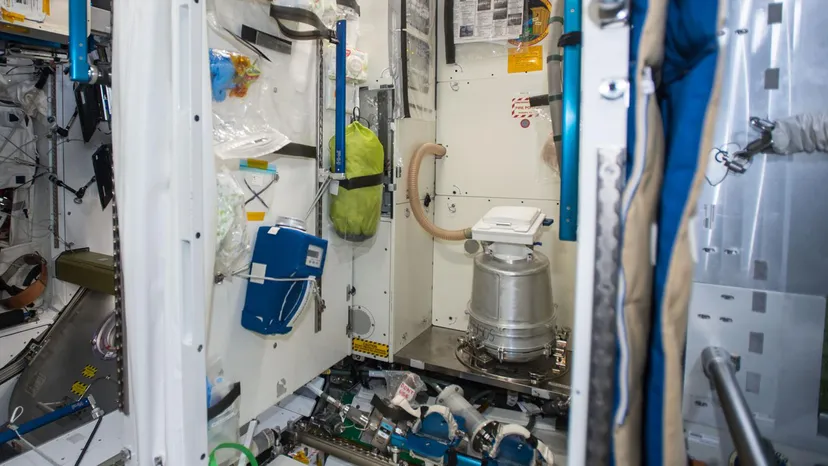
On May 5, 1961, barely three weeks after Soviet cosmonaut Yuri Gagarin’s historic orbit of the Earth, NASA astronaut Alan Shepard waited, strapped into the Freedom 7 spacecraft. He would become the first American in space. What NASA officials hadn’t anticipated was that Shepard would have to endure five hours of delay cocooned in his shiny silver spacesuit before his 15-minute orbit.
“Man, I got to pee,” he frantically radioed launch control. Allowing Shepard to urinate in his suit would destroy the medical sensors he was wired with, but eventually launch control had no option but to let him go. Shepard had to suffer the discomfort of a wet suit till the cooling system inside evaporated the liquid.
Early efforts
NASA hadn’t solved the problem entirely even in 1963 when Gordon Cooper blasted off on the last Project Mercury flight. There was a urine collection device inside the suit, but the urine leaked out of the bag and the droplets seeped into the electronics, leading to a systems failure towards the end of the mission.
If wayward pee was a problem, think of what its twin, poop, could do in the cramped quarters of a spacecraft!
The Gemini project was launched to prepare men for the Apollo moon mission. In 1965, Jim Lovell and Frank Borman spent 14 days flying in Gemini 7, the longest manned mission at the time. They had to poop into a cylindrical plastic bag and add a substance to kill the bacteria and odours. Though the pee could be sent out directly into space through a valve-operated hose, the poo bags had to be stored in the craft till they landed.
By the time the Apollo missions came around, the system hadn’t improved much. The Moon men’s toilet ordeal lasted 45 minutes to an hour. They had to undress completely in a corner of the spacecraft and stick a faecal collection bag to their bottom. Low gravity meant that the poop wouldn’t fall down. The astronauts had to manually help it along with a finger cot, a glove-like covering for a single finger. They also had to knead a germicide into it to prevent the growth of gas-forming bacteria that could cause the bags to explode.
Hit and miss
Accidents did happen. Houston once heard the commander of the 1969 Apollo 10 mission Tom Stafford say, “Give me a napkin quick. There’s a turd floating through the air!”
On the first Space Shuttle mission in 1981, astronauts had to unclog smelly blocked toilets. Frozen urine ejected from the Russian Mir space station, damaged the station’s solar panels over time, reducing their effectiveness by around 40%.
Today, on the International Space Station (ISS), each astronaut is given his or her own funnel for peeing. It attaches to a hose. Urine is sent through a filtration system and recycled into drinking water. There is a proper sit down toilet for more serious business. The waste is sucked into a canister, which is stored and later shot back towards Earth along with other trash, where it burns up in the atmosphere.
Did you know?
Astronauts go through ‘positional training’ on Earth to perfect their aim since the toilet on the ISS has a narrow opening. The mock toilet has a camera at the bottom. Astronauts don’t actually go, but watch a video screen in front of them to check that their alignment is spot on. The toilet costs millions of dollars, so missing the target is not an option.
During a spacewalk or an EVA (extravehicular activity), astronauts wear a maximum absorbency garment, which is essentially a large diaper.
NASA’S 2020 Lunar Loo Challenge, which invited designs from the public for compact toilets that would work well in both microgravity and lunar gravity received tremendous response. The Artemis program plans to land a man and the first woman on the Moon by 2024.
Picture Credit :Google




